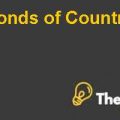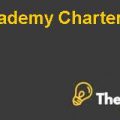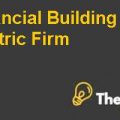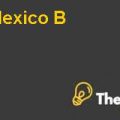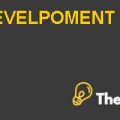Bed Bath & Beyond: The Capital Structure Decision
Introduction:
The report presents a case about Bed Bath & Beyond (BBBY), one of the leading stores which carry variety of household items from bedding to bath items to kitchenware. The company had strong cash flow position and financed its major acquisitions through internally generated cash from its operations. In 2003, the company observed that the growing cash position of the company deteriorate the return on equity, so the firm decided to revise its capital structure.
Problem Statement:
The management was concerned about the growing cash position of the company, which significantly deteriorated the return on equity, so the management was considering to revise its capital structure and finance its latest expansion through debt finance.
Case Analysis:
The report contains a detailed analysis of the difficulties faced by the company due to the growing cash position and an evaluation of the different factors; which could be considered while revising the capital structure of the company. The report contains areas which include the following:
- Approve the issuance of debt
- Basis of the decision
- Effective opposite arguments
- Recommendation
Approve the issuance of debt:
Bed Bath &Beyond (BBBY) had enjoyed tremendous success over the past years, which enabled them to generate sufficient cash from their operations that was used for the expansion in the company. Although, the balance sheet of BBBY was very strong but the company continually reported excess cash; which might not attract the shareholders and might raise doubt on the management’s ability to efficiently manage the capital structure of the company. Further, the return on equity and EPS deterriorated, which might discourage investor’s confidence and might encourage them to divest their shareholding.
The company had showed concern about their shareholders in the past and had reported some successful acquisitions in the past; which enabled them to report increased net earnings from $15,960 in 1993 to $399,470 in 2004. So the organization shall also consider to adopt a practice, which would enhance the value of the shareholders and increase their confidence on the company.
The company had an excess cash of around $400 million and the company had also an opportunity to raise debts of around $636.3 million; which could be used to repurchase the shares. If the company adopted this practice then it would improve the return on equity and would also raise earning per share; which would ultimately attract shareholders and would encourage them to retain their shareholding in the company. The company was considering to either raise 40% of debt to capital, which would represent $636.3 million or raise 80% of debt to capital that would represent $1.27 billion and would later be used to execute the share repurchase. One advantage of the debt issue is that the interest expense is a deductible expense in calculating taxable profits but on the other hand, the company shall also consider that the debt issue would deteriorate the gearing and interest coverage ratio of the company. Further, the company shall also consider the negative impact of debt issue on the credit rating of the organization, which might heave difficulty for the company to raise further finance in the future or might require to raise debts at a relatively higher rate which would deteriorate the net earnings of the organization.
Further, if the company adopted debt financing; this would provide an opportunity to raise debt financing at 4.5% which was very low interest rate as compared to which had been offered in the past, so the climate seemed favorable for BBBY for adding debt to its capital structure.
Basis Of The Decision:
The management was concerned about managing the excess cash and revising the capital structure policy of the company. Using the excess cash of $400 million and issuing the debts at either 40% or 80% would provide an opportunity for the company to repurchase its share; which would ultimately improve the EPS and return on equity, hence it will enhance the shareholder’s confidence
Our analysis in Appendix 1 shows that in case the company uses 40% debts and $400 million cash to repurchase its shares then the company could repurchase around 28,009 shares at $37 per share, which would result in an EPS of 1.41 and diluted EPS of 1.37. This is substantially higher than the current EPS of 1.35 and diluted EPS of 1.31.Further, if the company used 80% debt and $400 million cash to repurchase its shares then, the company could repurchase around 45,135 shares which would result in an EPS of 1.44 and diluted EPS of 1.39. High earnings per share would improve the shareholder’s confidence and would provide an opportunity to continually trade shares in the market. This could benefit the shareholders to enjoy the capital gains; hence...............................
This is just a sample partial case solution. Please place the order on the website to order your own originally done case solution.
Bath Bed & Beyond (BBBY) had no long-term debt on the balance sheet. While many analysts believe the balance BBBY in force, allowed more flexibility, some commented on the risks of growing cash balance. These problems have raised questions about the capital structure in BBBY. In early 2004, interest rates were at a record low, making it an attractive time to consider the issue of debt and performance of any repurchase of shares or one-time special dividend. Capital structure provides several suggestions for students to analyze. "Hide
by Artur Raviv, Timothy Thompson, Philip Gresh, Shannon Hennessy Source: Kellogg School Management 14 pages. Publication Date: July 30, 2004. Prod. #: KEL082-PDF-ENG


